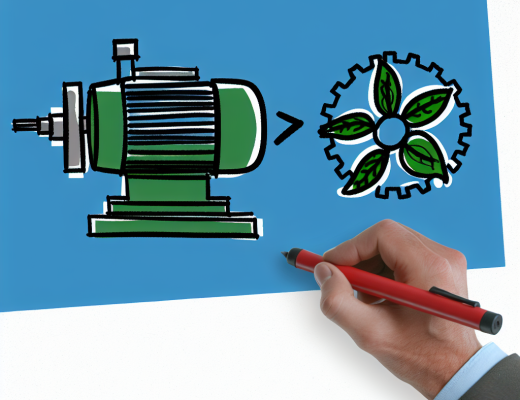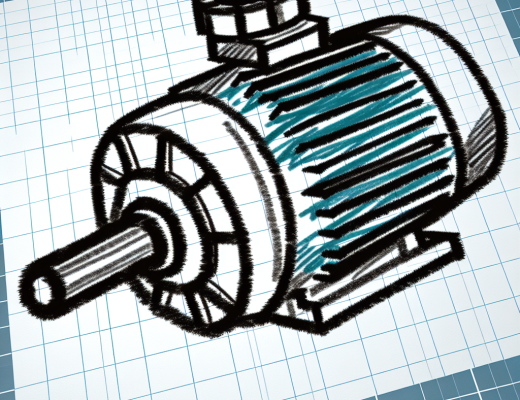Over the winter months, you may wonder how your solar panels continue to function despite the shorter days and harsher weather conditions. Understanding the mechanics of solar panels in winter is imperative for maximizing their efficiency and knowing what limitations to expect. This post will guide you through how solar panels generate energy during cold months and highlight the factors that can impact their performance, ensuring you’re well-equipped to make the most of your solar investment all year round.
The Science Behind Solar Panels
Your understanding of solar panels begins with how they convert sunlight into electricity. By utilizing semiconductor materials, solar panels harness the energy from sunlight, converting it into usable power for your home or business. This technology not only contributes to reducing energy bills but also supports sustainable energy generation, making it an attractive choice for many consumers.
Photovoltaic Effect
Among the fundamental principles of solar energy is the photovoltaic effect, which occurs when light photons strike the solar cells’ surface, exciting electrons and generating direct current (DC) electricity. This process is vital for transforming sunlight into energy you can use to power appliances and devices.
Winter Performance Factors
An understanding of winter performance factors can help you maximize your solar panel efficiency during colder months. These include solar angle, snow accumulation, temperature, and sunlight hours. Each of these factors plays a role in how much energy your solar system can generate.
- Solar angle affects the intensity of sunlight hitting your panels.
- Snow accumulation can block sunlight, reducing energy production.
- Cold temperatures usually enhance the efficiency of solar panels.
- Fewer sunlight hours mean less energy generation overall.
In fact, the efficiency of solar panels in winter doesn’t have to be a significant concern if you consider these performance factors. You can optimize energy production by ensuring panels are clear of snow and debris, angling them effectively to capture sunlight, and being aware of shorter daylight hours during the winter months.
- Regular maintenance can improve the performance of your system.
- Consider investing in tilt mounts to optimize sunlight capture.
- Higher-efficiency panels can make a difference in low-light conditions.
- Monitoring systems can help you track energy output effectively.
Any attention to these factors can help you maintain optimal energy output throughout the winter season.
Solar Panel Efficiency in Cold Weather
Some people may assume that cold weather negatively impacts solar panel performance, but in reality, it can enhance efficiency. Solar panels typically generate more electricity at lower temperatures, meaning that you can still expect respectable energy output even during the winter months. It’s vital, however, to consider how other factors, like snow and ice, may also play a role in your system’s effectiveness.
Temperature Effects
Before plunging into temperature effects, here’s a breakdown of how temperature impacts solar panel performance:
Temperature Effects on Solar Panel Efficiency
| Higher Temperatures | Can reduce efficiency by increasing resistance in the panels. |
| Colder Temperatures | Often improve efficiency as the panels operate with less resistance. |
Snow and Ice Impact
Solar panels can be affected by snow and ice, which may cover your system and block sunlight. This blockage can temporarily reduce energy production, but many solar panels are designed to shed snow easily due to their smooth surface. Even a small amount of sunlight can help melt the snow and restore efficiency.
And while snow may initially hinder your solar panels, it’s vital to focus on the overall benefits of solar energy in winter. The sun’s angle and brightness can still generate power even on cloudy days, making your investment in solar technology worthwhile. Regular maintenance, like ensuring your panels are clear of debris, will help optimize performance throughout the winter season.
Common Misconceptions About Solar Panels in Winter
You might think that solar panels are ineffective during winter months, but this is a common misconception. In reality, solar panels can still generate electricity in colder temperatures, and in fact, they can perform better in crisp, sunny weather. Snow can also reflect sunlight, allowing for additional light to reach your panels. Understanding these facts can help you maximize the benefits of solar energy all year round.
Performance Myths
Above freezing temperatures are not a prerequisite for solar panel efficiency. Many assume that solar panels only work well in warm climates, neglecting that they can actually produce energy even in snowy and chilly conditions. In winter, the clear skies often found during cold weather can enhance the sunlight absorption of your panels.
Durability Concerns
Winter weather may raise concerns about the durability of your solar panels.
With advancements in technology, solar panels are designed to withstand extreme weather conditions, including harsh winter climates. They are tested against heavy snow loads and strong winds to ensure reliability. Additionally, most solar panels come with warranties that cover damages from environmental factors, providing you peace of mind regarding their performance and lifespan, regardless of the season.
Maintenance of Solar Panels in Winter
Now that winter has arrived, your solar panels require specific maintenance to ensure optimal performance. While they are designed to function efficiently in snowy conditions, taking a proactive approach is necessary. Keeping your panels free from debris, monitoring their output, and preparing for any potential issues will help you maintain their efficiency throughout the cold months.
Snow Removal Techniques
Solar panels can accumulate snow, which reduces their ability to generate electricity. To address this, you can gently remove snow using a roof rake or a soft brush, ensuring not to scratch the panels. Avoid using metal tools, as they can cause damage, and be cautious on slippery roofs. If the snow is too heavy, ensure the panel’s tilt helps it slide off naturally over time.
Routine Checks and Repairs
Across winter, your solar panels may experience wear or damage that isn’t immediately visible. Conducting regular checks allows you to spot issues such as cracks or loose connections, which can significantly impact performance. Keeping a maintenance schedule ensures that any components needing repair or replacement are addressed promptly, maintaining your system’s efficiency.
Indeed, investing time in routine checks and repairs during winter can save you both energy and money in the long run. Look for signs of damage, such as unusual noises or reduced output, and inspect connections and wiring for wear. If you notice significant issues, consulting a professional can help ensure that your system is running at its best and that any necessary repairs are handled safely and effectively.
Energy Production During Winter Months
Many people wonder if solar panels can effectively generate energy during winter months. Although sunlight is less intense and days are shorter, solar panels continue to produce electricity. Their efficiency may drop, but snow can actually help by reflecting sunlight onto the panels, enhancing their output when cleared of snow accumulation. Understanding how your solar panel system performs in winter can help you manage your energy needs more effectively.
Average Sunlight Hours
Sunlight plays a significant role in the energy production of solar panels, and during winter, the average sunlight hours can be notably reduced. Depending on your location, you may experience significantly fewer hours of direct sunlight, which can impact your solar energy generation. However, the panels are designed to capture and convert even limited sunlight into usable energy, which can still meet your needs.
Seasonal Energy Output Comparison
Before solar energy systems are installed, you should explore how their output varies across seasons. The following table outlines a comparison of energy output between summer and winter months:
| Season | Average Energy Output (kWh) |
|---|---|
| Summer | 1200 |
| Winter | 600 |
At first glance, the table highlights that summer months generally yield significantly higher energy output than winter months. This may lead you to question the viability of solar energy during colder seasons. However, understanding seasonal patterns can help you plan accordingly, so you can optimize your energy usage and maintain adequate power supply throughout the year.
| Month | Energy Output |
|---|---|
| June | 300 |
| December | 180 |
Cost-Benefit Analysis
After considering the practicality of solar panels during winter, it’s vital to weigh the potential costs against the benefits. While solar panels may generate less energy due to shorter days and potential snow cover, the investment can still pay off. Analyzing your energy needs, local incentives, and future electricity rates will help you determine whether solar energy is a sound financial decision for your home.
Initial Investment
Along with ongoing maintenance considerations, the initial investment for solar panels can be significant. The costs typically include the panels themselves, installation, and any necessary permits or equipment. However, many financing options are available to ease the burden of upfront costs and may even lead you to tax credits or rebates specific to your region.
Long-Term Savings
One of the most compelling advantages of solar energy is the potential for long-term savings. After the initial investment, the savings on your electricity bills can add up significantly over time, especially as energy prices continue to rise. You’ll also increase your home’s value and contribute to a cleaner environment.
CostBenefit analyses usually show that the savings achieved over the lifespan of solar panels can far exceed the initial costs incurred. Over 25 years, you may save thousands of dollars in utility expenses, depending on your energy consumption and local electricity rates. Additionally, if your system generates excess energy, you might qualify for net metering credits, further enhancing your savings while promoting sustainable energy use.
To wrap up
The effectiveness of solar panels in winter largely depends on factors like sunlight exposure, snow accumulation, and temperature. While cold weather can enhance efficiency, snow can obstruct energy production. It’s important to regularly clear snow from your panels and ensure optimal positioning to harness available sunlight. Understanding these dynamics enables you to maximize your solar system’s performance even during the colder months, ensuring you make the most of your investment in renewable energy.




